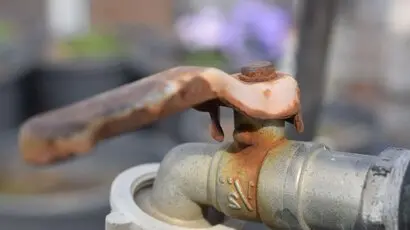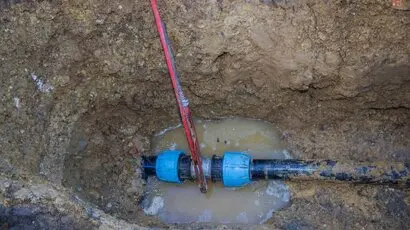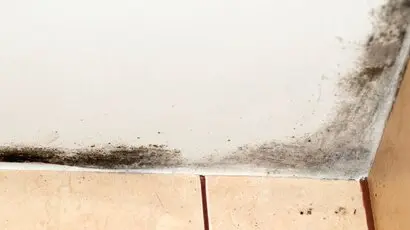You rush out the door, ready to enjoy your morning paper and a hot cup of coffee. But instead of the usual peaceful start, you’re hit by a loud hissing noise. Suddenly, panic sets in as you notice a mini geyser sprouting up from under the garden tap—a burst pipe! Water is gushing everywhere, putting your beloved plants and even your home’s foundation at risk.
This isn’t just a minor hassle; burst pipes can cause serious trouble. Water damage might lead to mould, a significant health concern. Plus, those leaks can send your water bills soaring. Not to mention, low water pressure could hint at a hidden leak. If ignored, a burst pipe could compromise your whole plumbing system.
Here in Australia, the kind of pipe you’ve got can change how you repair it. Common types include copper, prized for its toughness; PVC, a light plastic option; and PEX, which is flexible and freeze-resistant. Regardless of these differences, urgency in tackling the problem doesn’t change.
Locating the Source of a Burst Pipe
When a burst pipe starts flooding your home, quick action is key. However, before jumping into repairs, it’s important to pinpoint exactly where the burst is. By focusing on the source, you reduce water damage and improve your chances of a successful fix.
![]()
Signs of a Burst Pipe
Visible signs are often the first clues. Look for cracks or holes in the pipes themselves, especially around areas exposed to cold or prone to freezing. Listen for hissing sounds that might indicate escaping water. Wet patches on the floor or walls near pipes or behind cabinets are strong indicators of a leak. A sudden drop in water pressure throughout the house can also signal a burst pipe somewhere in the system.
When the Leak is Elusive
For stubborn leaks or situations where the source isn’t readily apparent, professional plumbers have sophisticated detection methods at their disposal. Electronic leak detectors pinpoint hidden leaks using sound or electromagnetic signals. For buried pipes, special cameras can be inserted into the water lines to visually inspect for damage.
Taking Control: Stopping the Water Flow
Once you’ve located the burst pipe, it’s important to take steps to stop the water flow as soon as possible. Knowing where your shut-off valve is located is critical. Typically, this will be near the water meter or where the main water supply enters your house. Shutting this valve will stop the flow of water and allow you to assess the damage.
Shutting Off the Water Supply: Your First Line of Defense
A burst water pipe can cause chaos at home. Every moment the water gushes freely, you face potential flooding and serious damage. To limit the mess, turn off the water supply as soon as you can.
![]()
Locating the Main Valve
The main water shut-off valve is your first line of defence. It’s usually located near the house’s foundation, either inside a basement, garage, or behind cabinet doors near the front or back of the house. In some cases, it might be on the street frontage near the water meter. Look for a valve on the main water line coming into your house.
Preparing for the Repair
Assessing the Damage
A burst pipe is a nightmare, causing water damage and disrupting your home’s peace. Before diving into a repair yourself, consider the severity. Extensive leaks or breaks are best left to a qualified plumber. However, for smaller issues, you might be able to manage a temporary fix until a professional arrives.
Gearing Up for the Repair
The tools and materials you’ll need depend on your pipe material. Here’s a basic breakdown:
- Copper Pipes: You’ll likely need a pipe cutter, solder, and a torch for a permanent repair.
- PVC Pipes: A pipe cutter, rubber gaskets, and PVC cement are more common for these pipes.
Unsure about the type of pipe or the right tools? Don’t hesitate to call a plumber. They’ll ensure you have the correct equipment and guide you through the process.
Safety First!
Before starting any repairs:
- Turn off the water supply at the main valve.
- Open taps and drains to relieve pressure.
- Wear gloves and eye protection to shield yourself from sharp edges or unexpected water spurts.
Fixing a Burst Copper Pipe in Your Aussie Home
When pipes burst, it can be a real headache. But if you’ve got a broken copper pipe in your Aussie home, don’t despair! Here’s a guide to fixing the damage and getting your water flowing again.
![]()
Cutting Out the Damaged Section
Grab a pipe cutter to make a neat, straight cut on both sides of the damaged section. Ensure you cut a few centimetres beyond the visible burst to remove all affected pipe. Don’t forget to support the pipe with nearby hangers to prevent unnecessary stress before you cut.
Soldering the Repair (for the DIY Pro)
Fixing the burst pipe with soldering requires some skill and the right tools. You’ll need a soldering torch, solder, and a little know-how on creating watertight seals. Clean the cut ends of the pipe and the new pipe section with sandpaper. Apply a rubber gasket or soldering flux to the new pipe’s end, then slide it into the fitting. Heat the fitting and pipe with the torch until the solder melts. Feed the solder into the joint, creating a secure seal.
Important Note: Soldering can be hazardous if you’re not familiar with the technique. If you’re unsure about using a torch and solder, consider alternative repair methods or call a licensed plumber for assistance.
Alternative Repair Methods
There are several other ways to fix burst pipes, depending on what the pipe’s made of and how comfortable you are with DIY tasks.
- Compression Fittings: These work well for copper pipes and require tightening a nut around a ferrule to create a seal.
- Push-to-Connect (PTC) Fittings: These are a popular choice for various pipe materials, including copper. Simply insert the pipe into the fitting until it clicks – a great option for easy repairs. Make sure the PTC fittings are compatible with your specific pipe material before using them.
Turning the Water Back On and Testing
Most valves require a clockwise rotation to shut off the water. If you have a gate valve with a handle, turn it until it’s perpendicular to the pipe. For a wheel valve, turn it clockwise until it stops. Don’t fiddle with fancy tools – a pipe cutter, hose clamp, or c-clamp won’t help here.
By following these steps, you can fix a burst copper pipe and get your water running smoothly again. But remember, if you’re not comfortable with DIY repairs or the damage seems extensive, don’t hesitate to call a qualified plumber. They have the expertise and tools to handle any plumbing emergency.
When to Call a Plumber
Sealing joints and cutting pipes accurately are crucial for permanent repairs. If you’re unsure about:
- Sealing joints: Leaking repairs can worsen the damage and lead to mould growth.
- Cutting pipes accurately: Improper cuts can create weak points that are prone to future breaks.
Don’t hesitate to call a plumber to avoid causing further problems.
Peace of Mind After a Burst Pipe: Taking the Next Step
Pat on the back for fixing that broken pipe yourself! While you might be a dab hand with a wire fitting brush and those pipe cutters, a burst pipe can leave hidden damage. That hissing could be more than a single pipe slice - tiny pinhole leaks can be lurking undetected.
To ensure your stellar work with epoxy putty and the new pipe is a long-term solution, consider scheduling a professional inspection by WP Plumbing. Their qualified plumbers have the experience and necessary tools—from a utility knife to safety goggles—to assess the repaired section and identify any potential weak spots that could lead to future pipe bursts.
WP Plumbing understands that a temporary fix with duct tape or plumber’s putty might seem alright for now, but it’s those hidden problems that can cause major headaches down the track. Their plumbers use top-of-the-range repair sleeves, ensuring a secure and long-lasting solution for your burst pipe issues.
Don’t risk another burst ruining your warm air and comfort. For peace of mind and to prevent future plumbing dramas, contact WP Plumbing today. Their reliable service and commitment to customer satisfaction will leave you with one less thing to worry about.






